These animal facts for kids will help the whole family learn more about the wild side of things
Sharks don’t have bones. Sloths are great swimmers. Monkeys can go for several days without water! Yup, kids love learning and there’s nothing like a few fun and wacky facts to amuse them. From the three-toed sloth to the unicorn of the sea, we’ve gathered some fun facts about animals that kids will love.
10 Shark Facts for Kids
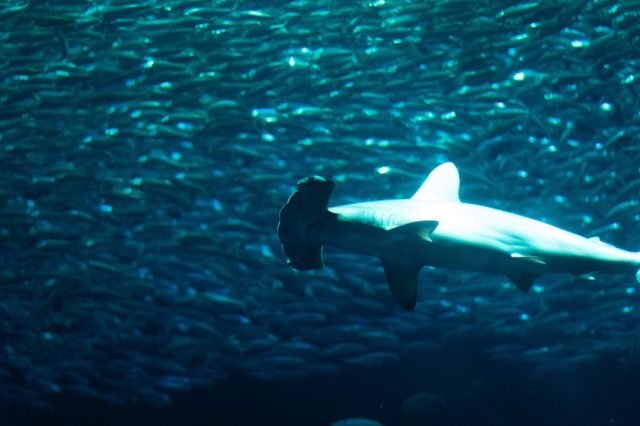
1. Sharks have been around for over 400 million years.
2. There are more than 470 species of sharks.
3. Sharks do not actually hunt humans or consider humans food. Sharks incidents occur when sharks are hunting for seals, dolphins or other "human-sized" prey. It's a case of mistaken identity!
4. The goblin shark is considered the ugliest shark in the world.
5. The shape of a hammerhead shark's head actually improves their vision.
6. There are nine species of hammerhead sharks around the world.
7. The Great Hammerhead can weigh as much as 1000 lbs. and be as long as 20 feet
8. Most sharks live around 25 years but some can live as long as 100.
9. Sharks do not have bones. Their skeleton is made of cartilage.
10. Some sharks can swim up 40 MPH.
9 Big Facts About Elephants
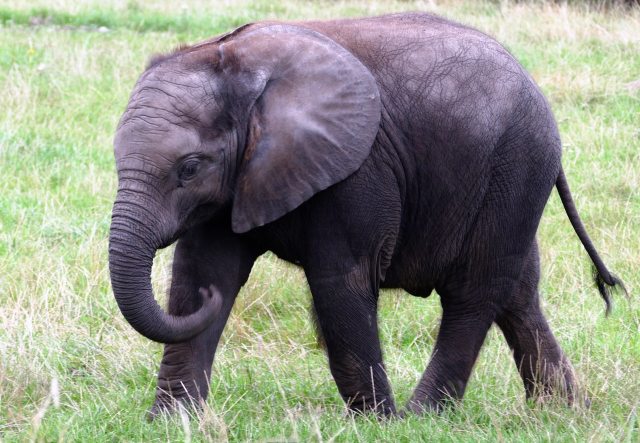
1. African elephants (Loxodonta africana) are the largest land mammal on earth.
2. Elephas maximus is the Latin name for the Asian Elephant. They are smaller than African Elephants.
3. Asian Elephants also have smaller, less-pronounced ears than those of African Elephants.
4. An elephant trunk has close to 40,000 muscles.
5. Elephant tusks do not grow back.
6. Elephants have a gestation period (the time when the fetus is growing in the mom) for 22 months—the longest of any mammal.
7. Elephants eat for about 16 hours every day!
8. Elephants only eat plants, so they are herbivores. They eat grasses, bamboos, flowers, seeds, fruits, leaves and other plant matter.
9. Baby elephants are able to stand within 20 minutes of being born.
14 Things to Know About Manatees
1. There are three species of Manatee (Trichechus). They are the West African manatee (T. senegalensis), the Amazonian manatee (T. inunguis) and the West Indian manatee (T. manatus). The West Indian manatee is the species seen frequenting the Florida Coast.
2. The common nickname for the manatee is the sea cow.
3. Manatees are believed to account for at least some of the early-explorer’s mermaid sightings.
4. They can reach 13-feet long and weigh as much as 3,000 pounds.
5. But don’t be fooled by their size: they are gentle giants. They graze on water grasses, weeds and algae. They are the only aquatic herbivore.
6. In fact, an adult manatee can eat 1/10 of its weight in a day.
7. Manatees use their flippers to walk along the bottom of the body of water, feeling for food. When they find it, they scoop it up toward their mouths with their flipper.
8. Manatees are mammals, and they have one baby every two to five years. The babies are born underwater. Females are pregnant for about 1 year. The young nurse for 1-½-2 years.
9. Manatees live in the water but they need air to survive. They surface every few minutes when active and can stay under for as long as 20 minutes if still.
10. Babies need help getting up to the surface for their first breath. Shortly after birth they are able to swim on their own: usually within an hour.
11. Most mammals have seven neck vertebrae but the both the manatee and the sloth have just six. This means that manatees can’t turn their heads.
12. Besides the dugong, the manatee's closest living relative is the elephant.
13. Manatees can actually swim up to 20 MPH.
14. Manatees face a number of dangers in their native waters: boating accidents can harm or even kill manatees and things like plastics in the water can cause health problems. You can learn more about how to protect manatees even if you live thousands of miles away, by visiting Save the Manatee.
10 Things to Know About Narwhals
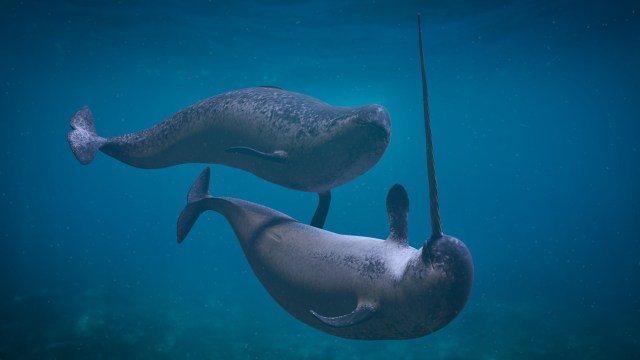
1. Narwhals are basically whales that sport a spiraled horn, or tusk, that juts out of their head much like a unicorn horn. Some narwhals actually have two tusks.
2. The narwhal’s tusk is actually a long jutting tooth. It even has nerves.
3. The tusk can grow as long as 10 feet. A narwhal can be 17 feet in length (plus the tusk!).
4. Narwhals sometimes use their tusks to joust.
5. They live in the Arctic waters of Greenland, Norway, Canada and Russia.
6. Narwhals weigh as much as 4200 pounds.
7. They eat squid, shrimp, halibut and cod.
8. There are about 80,000 narwhals throughout the Arctic waters.
9. Historians actually think that the narwhals are what the unicorns myth is base on. During the Middle Ages, unicorn horns were so coveted that royalty would pay extraordinary prices for them, often the weight of the horn in gold. Hunters traveled to Northern Europe to try and capture the narwhals and bring back their horns (which they would tell the royals were from unicorns).
10. Narwhals are still hunted today for their tusks, and in addition face other environmental threats like pollution. You can help by adopting a narwhal (bonus: you get a plush narwhal as a keepsake!).
13 Fascinating Facts About Reindeer
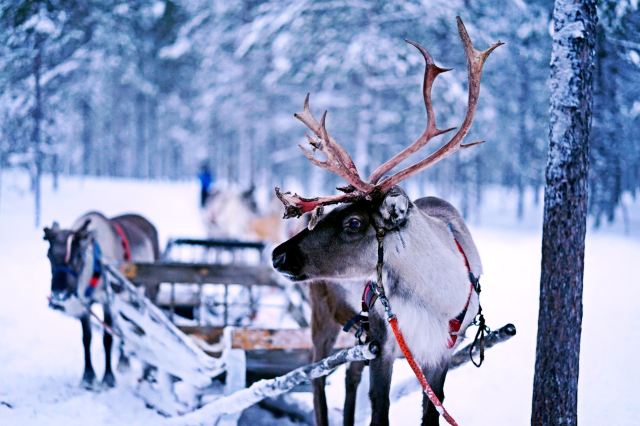
1.Rangifer tarandus is the scientific name for the animal we most commonly call reindeer. They are in the same family as deer, and there are more than a dozen sub-species.
2. In the wild, some reindeers travel more than 3000 miles in a single year.
3. In North America, reindeer are also known as caribou, although the current "taxonomic jury" is out on that all species of reindeer are caribou. Most people use the terms interchangeably.
4. Reindeer like it cold! They are native to Arctic and subarctic regions as well as tundra and boreal (read: snow, snow, snow!) to northern Europe, Siberia and North America.
5. The indigenous people of Finland, the Saami, have more than 400 words for the food, tools and other products taken from reindeer. Their word for reindeer, raingo, may be where the common name is derived.
6. Reindeer beards? In the winter time for reindeer grow their facial hair long enough to cover their mouths, which protects their muzzles when grazing in the snow.
7. Male reindeer have louder calls than females. Males use a small pouch under the skin of their throats which they inflate to blast out a loud bellow.
8. Reindeer grow new antlers every year.
9. For almost all kinds of reindeer, both male and female reindeer have antlers. Females shed their antlers when they give birth in the spring.
10. The Finnish Forest Reindeer, arguably the reindeer of Santa Claus fame, are the largest reindeer species. They are over 7 ½ feet long.
11. Finnish Forest Reindeer hooves have a special scoop that helps them forage through the snow for lichen and moss.
12. In warmer months, reindeer feast on grasses, mushrooms and plants. In the winter they feast mainly on moss and lichen.Reindeer have a strong sense of smell, which helps them sniff out food underneath layers of snow.
13. In many cultures, Reindeer are used pull sleds and sleigh. There's evidence of this dating back 7,000 years ago in Siberia!
17 Sloth Facts You Can Take Your Time Reading
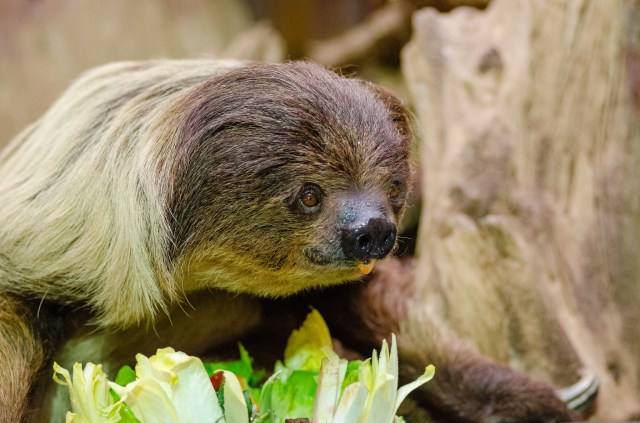
1. Sloths really are slow. So slow, in fact, that in the humidity of their native climate an algae actually grows on their fur. This gives them a greenish hue, which acts as camouflage.
2. Sloths, moths and algae have a beneficial relationship: The pyralid moth is a species of moth that lives in the sloth’s fleece. There is also an algae species that grows in the grooved hair of the sloth. Scientists believe that the moth transports nutrient-rich waste from the sloth’s poop to fertilize the algae. In other words, the moths are algae farmers on the sloth’s back. And guess what else? The algae is a key source of food for the sloth!
3. Sloths have 10 upper teeth and 8 lower teeth.
4. They can weigh between 8-17 pounds and grow to be between 21–29 inches in length.
5. Two-toed sloths can live up to 20 years in the wild and 30-40 years in captivity!
6. Sloths cannot shiver to stay warm, and so have difficulty maintaining their body temperature on rainy days.
7. Sloths see better at night than in the day and they have very poor hearing. They rely on their sense of smell to locate food and other sloths.
8. Sloths come down from their canopy about once a week to pee and poo unless there is a danger or predator. If that’s the case they do it from the trees!
9. They are good swimmers, especially the backstroke.
10. While they are very quiet in general, if scared they will hiss or moan.
11. Sloths eat leaves, twigs, berries, fruits and the occasional insect or small animal.
12. Females sloths are pregnant for six months.
13. Sloths usually mate and give birth while hanging in trees. Mothers will birth their babies either on the ground upside down in a hanging position. After it is born the infant grabs onto the mother’s fur and makes its way to her chest to nurse.
14. Sloth mother’s milk is higher in fat (6.9 %) and protein (61%) than cow's milk.
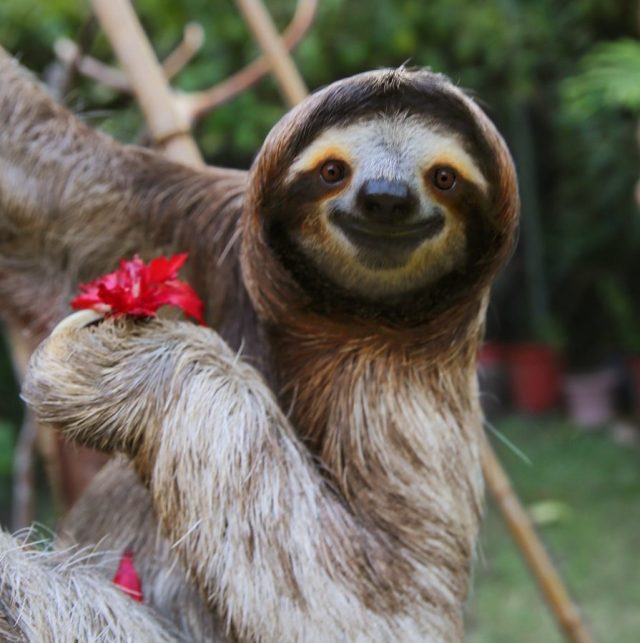
15. There are also four species of three-toed sloths including Bradypodidae pygmaeus, a pygmy species. The other three are B. torquatus, which has a mane; B. tridactylus also known as the pale-throated, three-toed sloth; and B. variegatus, the brown throated, three-toed sloth. They share many characteristics with their two-toed cousins, but a few things are different.
16. Three-toed sloths are better swimmers than their two-toed relatives.
17. They change trees up to four times a day.
18. The are diurnal, meaning they are awake either day or night. Two-toed sloths are nocturnal.
Want to learn more about these amazing animals and how you can help protect their habitat? Visit the WWF's sloth page.
18 Marvelous Monkey Facts
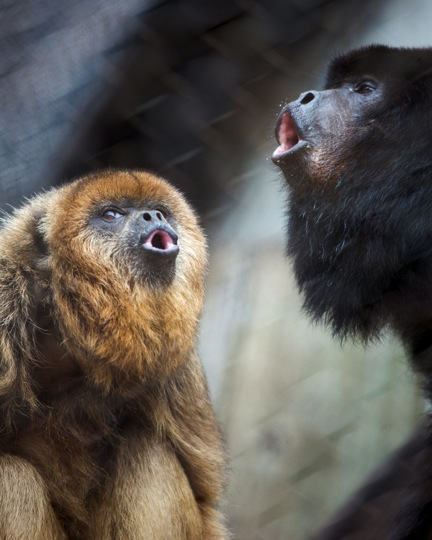
1. The Black Howler Monkey (Alouatta caraya) are native to eastern Bolivia, northeastern Argentina, Paraguay and southern Brazil.
2. Black Howlers eat they eat leaves, fruit and vegetable matter.
3. They get their name because they have enlarged throats and extra large voice boxes which allows them to howls.
4. They also have a special bony pouch beneath their throat that acts as a resonator which helps project their howls at great distances, sometimes more than a kilometer! Click here to hear it.
5. Young howlers are cared for by several females who carry, groom and protect it. Males will also help out.
6. Black Howler Monkeys do not have opposable thumbs.
7. The Squirrel Monkey (Saimiri sciureus) native to the lowland rainforest of Panama, Peru, Bolivia, Paraguay and Brazil.
8. Squirrel Monkeys eat a varied diet of insects, spiders, bird’s eggs and nestlings, fruits, nuts, blossoms and other forest edibles.
9. Squirrel monkeys have the largest groups of any other New World monkey, with as many as 100 monkeys in a given band.
10. They are not only smaller in size, but they make chirps and peeps for contact and alarms, earning them their likeness to the squirrel.
11. Squirrel Monkey births coincide with the time of greatest rainfall.
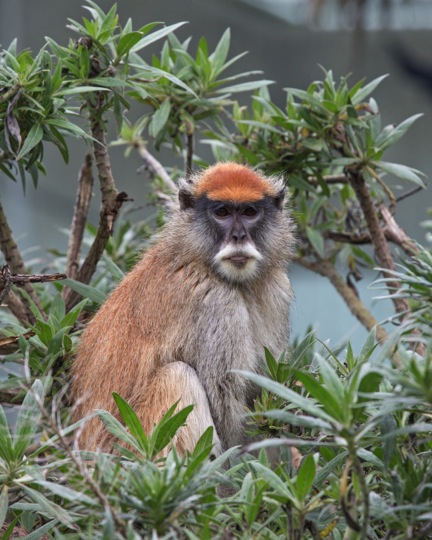
12. The Patas Monkey (Erythrocebus patas) are also known as Hussar monkeys, military monkeys and dancing red monkeys.
13. The Patas Monkey’s habitat is brush and grass savannas of Central Africa from Senegal to Ethiopia and south to Tanzania.
14. Patas Monkey diet consists mainly of grasses, shelled fruits seeds, berries, locusts and other insects, birds and lizards.
15. The Patas is large and slender, usually reddish gray, white or pale pink, with a long tail that is dark above and light underneath.
16. Adults have white mustache and whiskers and the males have mane-like hair.
17. They can go several days without drinking water.
18. Patas not only have opposable thumbs, they also have opposable big toes!
Need some fresh ideas?
Subscribe to our weekly newsletter for expert parenting tips and simple solutions that make life instantly better.
By subscribing you agree to Tinybeans Terms and Privacy Policy










